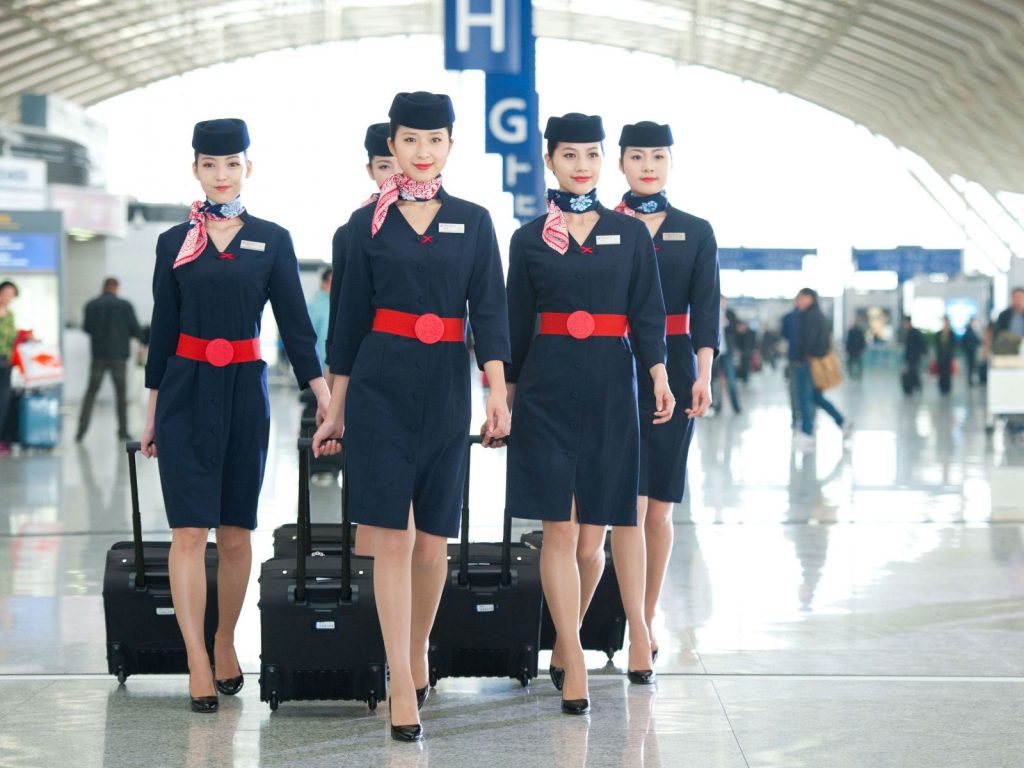Today when you climb over the aircraft, the first person you see is the flight attendants. These flight attendants are the ones that are responsible for your care throughout the journey. The dress code of the flight attendants is kind of like an emblem to the airline itself. These days, the flight attendants all wear the same business/casual designer dresses which have the same color cohabitation of navy blue, red, white and black.

But this did not have been the case over the course of the latter half of the 20th century. The uniforms of the cabin crew saw different changes as per the fashion trends. For example, in the 60s the dresses were mod with seat mini dresses along with go-go boots.
By the time it was the 2000s; the uniforms of flight attendants turned simple and were more streamlined. The airlines laid priority on providing comfort to the flight attendants rather than the flair.
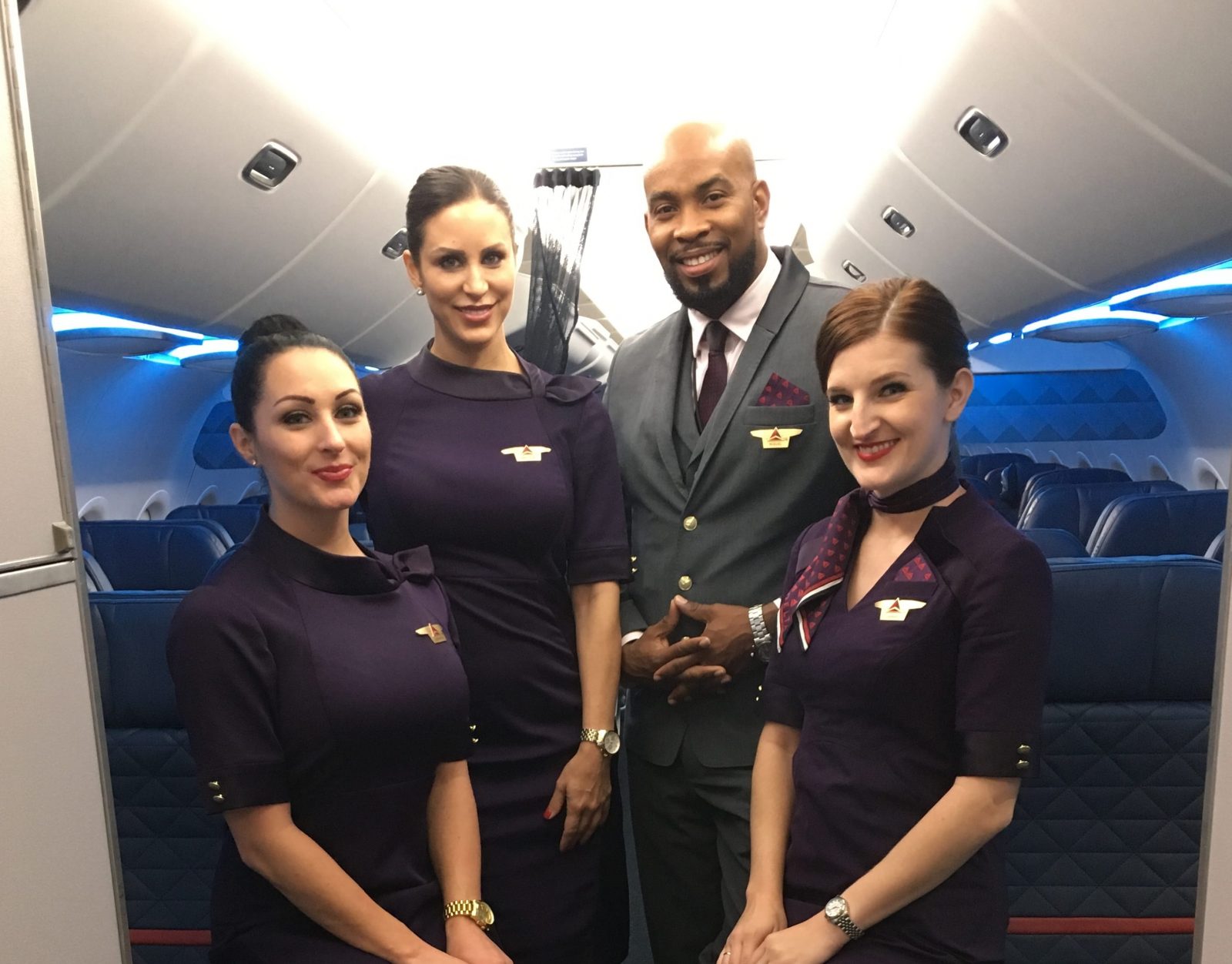
Today we decided to let our readers see what evolution did the flight attendants uniforms saw from the previous century to today. So have a read of our article, flight attendant uniforms and how they have changed over the years.
American Airlines: 1950s to Today 
The flight attendants for American Airlines back in the 1950s used to wear navy blue colored blazers and the same colored skirts. The uniform was comprised of breasted jacket that had 3 buttons along with the tapered waist. This jacket had to be worn over a white shirt with several notch lapels and a skirt at knee length.
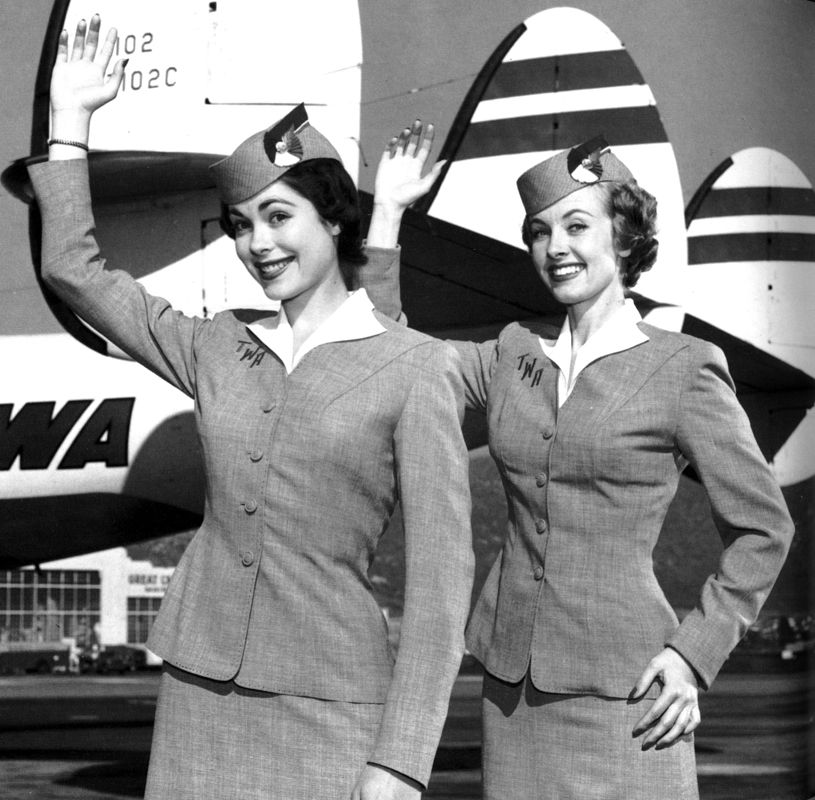
Change in trend:
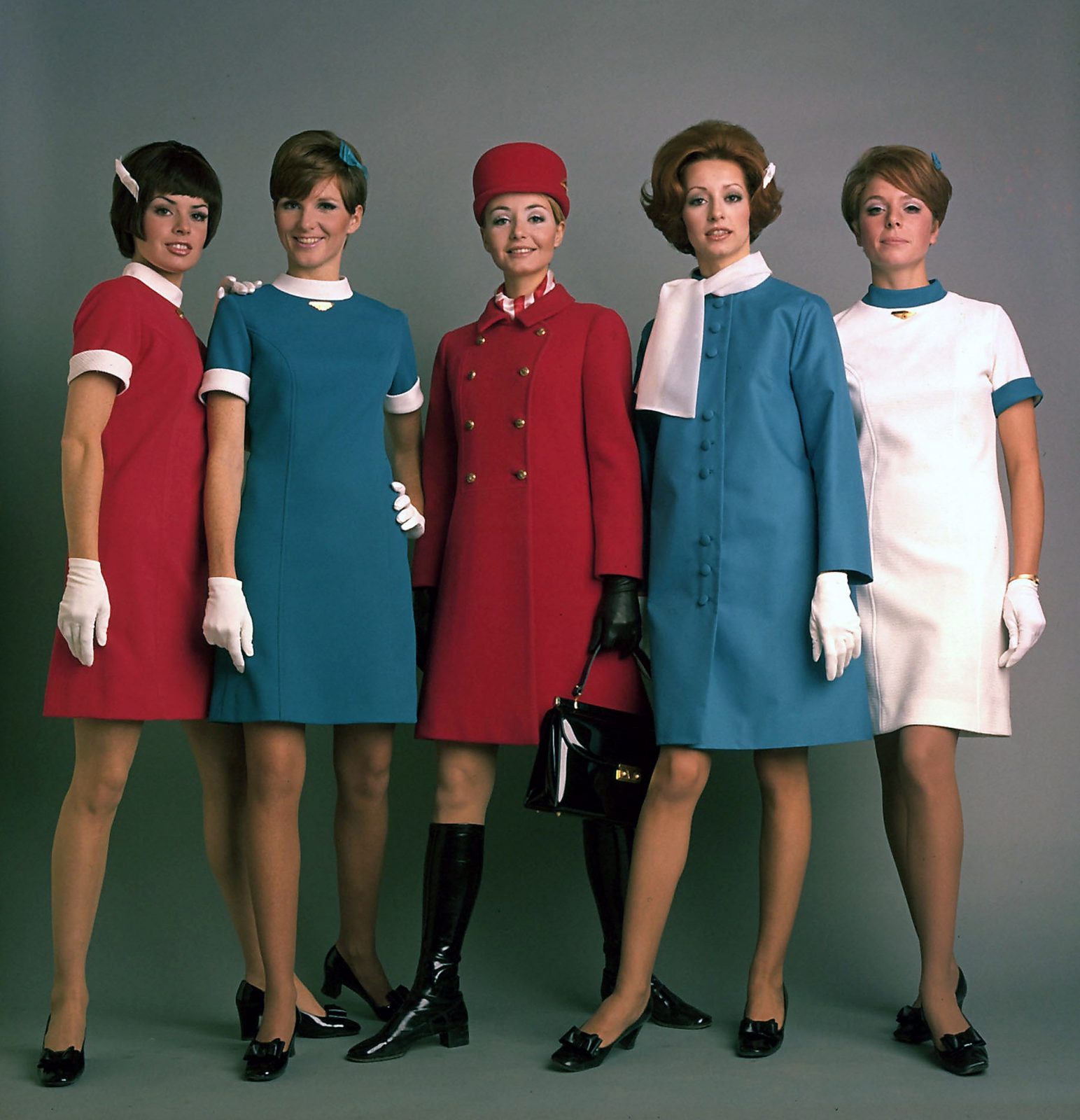
These uniforms saw a trendy change in the 1960s as they now had colors representing the American flag. As for the dress, it was a sheath dress in the mod style which had a stand away collar. The dress could be worn by these flight attendants with or without the belt in red, white and blue colors.
Today:

The clothes for the male flight attendants these days is a black blazer along with black pants and blue tie. For the female flight attendants’ uniforms, they are a black colored short-sleeved dress with the fitted silhouette. Thee dress is paired with a scarf of red and blue color.
Qantas: 1950s to Today
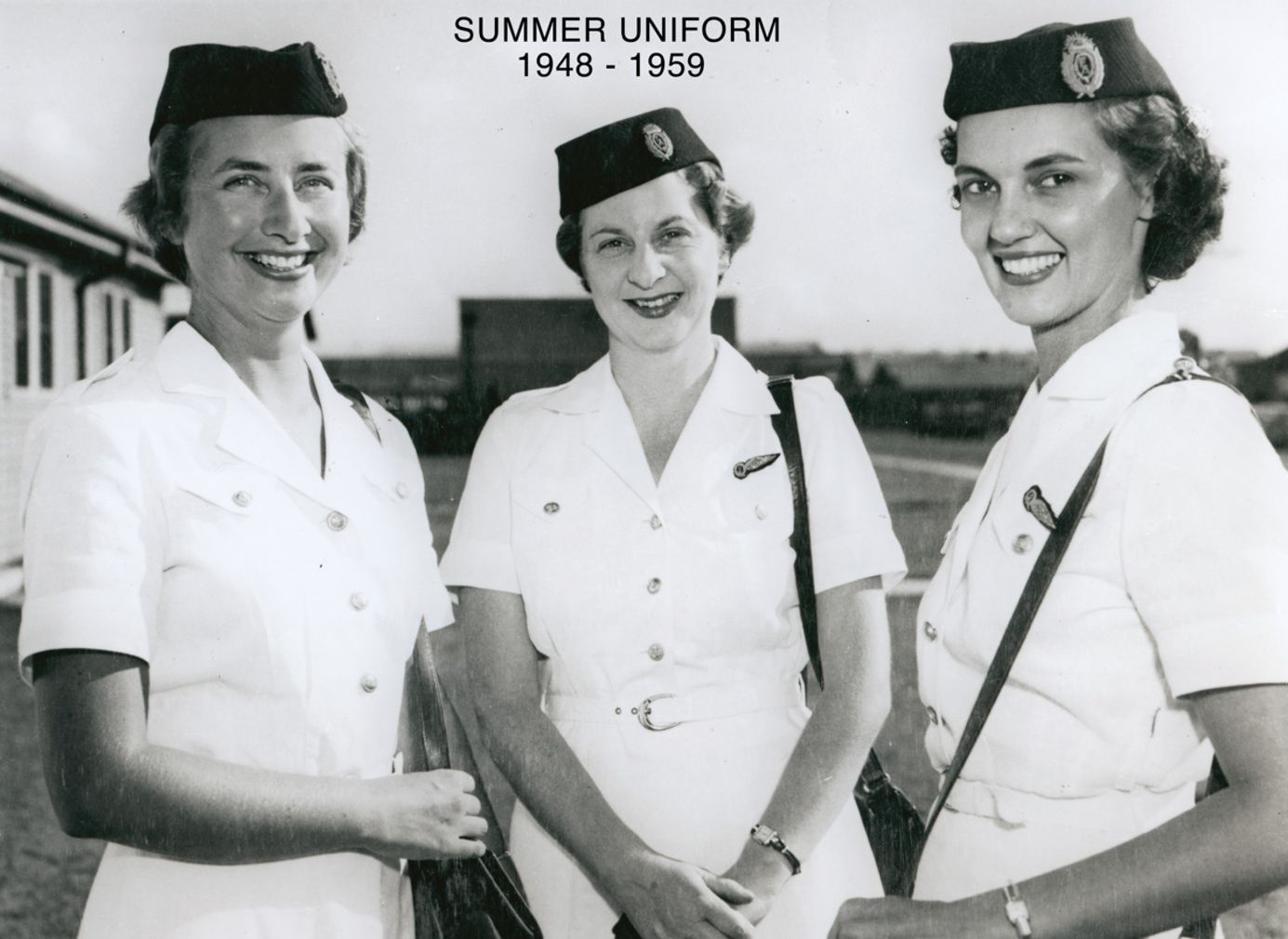
The flight attendants of Qantas back in the 1950s used to wear the short-sleeved dress that had a belt. This min dress had 3 buttons on the front and the flight attendants had to wear the matching colored pillbox shape hat along with gloves and heels.
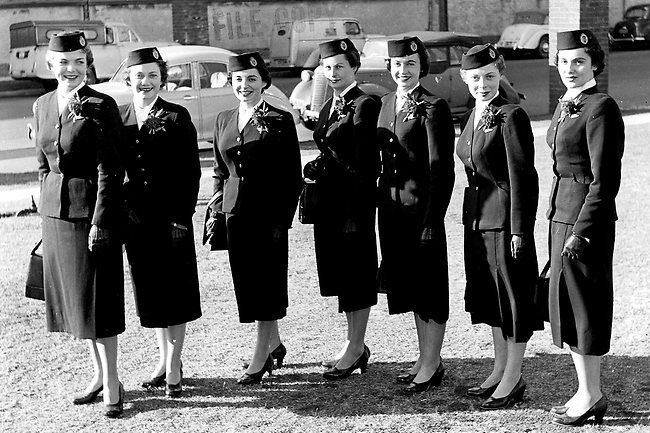
Upgrade in the 1970s:
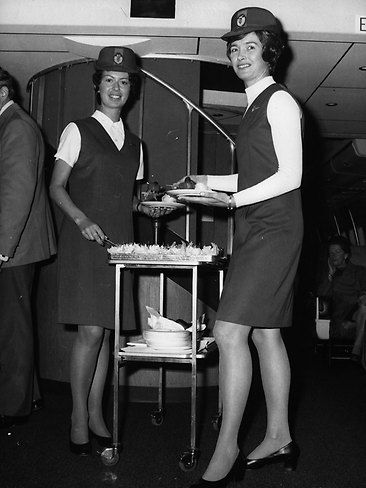
Form the years 1971 to 1974, these clothes transformed with a drastic color a change being Bright Blue. The uniform was now a shift dress with white turtlenecks that had short sleeves. It also had to be worn with the blue colored jacket and the blue hat which had a red-colored strip right in its middle.

Today:
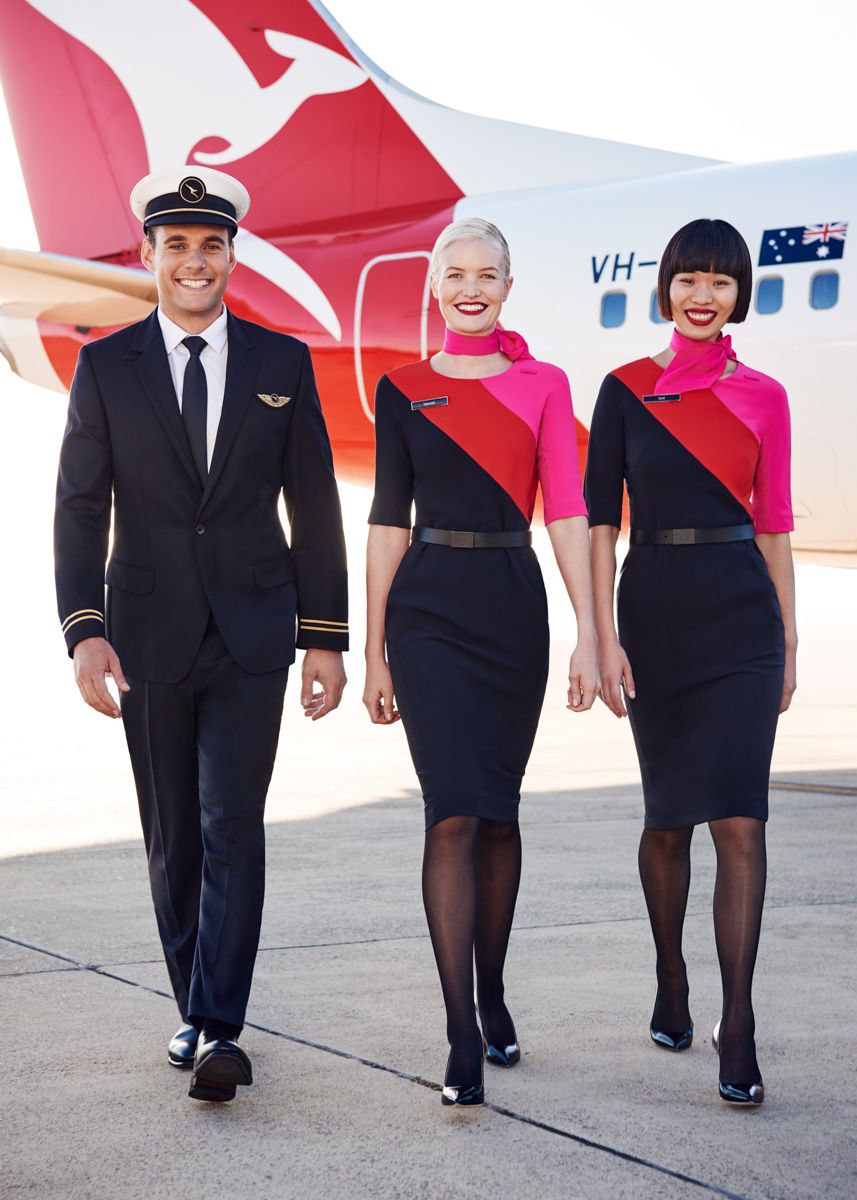
As for the dress today worn by flight attendants of Qantas, it is a navy blue dress that is belted and has fuchsia and dark red colored stripes. These modern designs for the clothes have been presented by Martin Grant, the Australian designer.
Delta Airlines: 1950s to Today
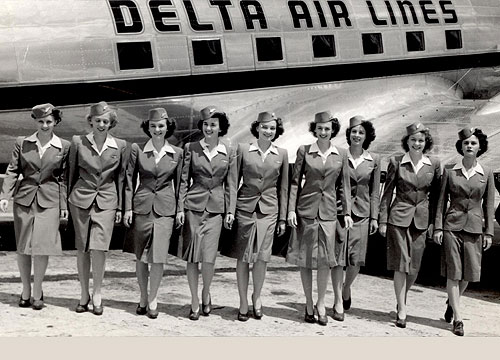
The flight attendants on the Delta Airlines back in the 1950s used to wear a blazer which was navy blue in color and tight fitted one that had large buttons. They were to be worn with the matching colored skirt, pillbox hat, and heels.
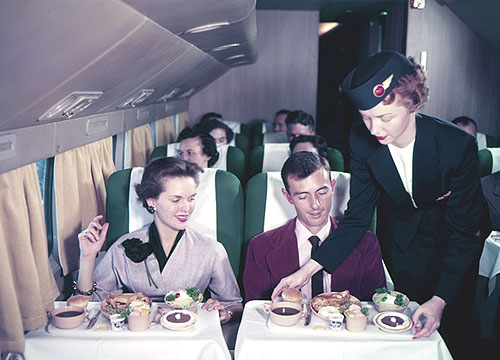
Change in 2006:
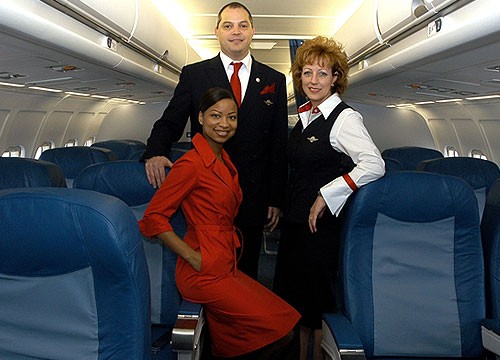
The very first major change in the uniforms of flight attendants came in 2006 when Delta Airlines debuted the new flight attendants uniform from designer Richard Tyler back in 2006 and was worn by the flight attendants until 2018.
Today:
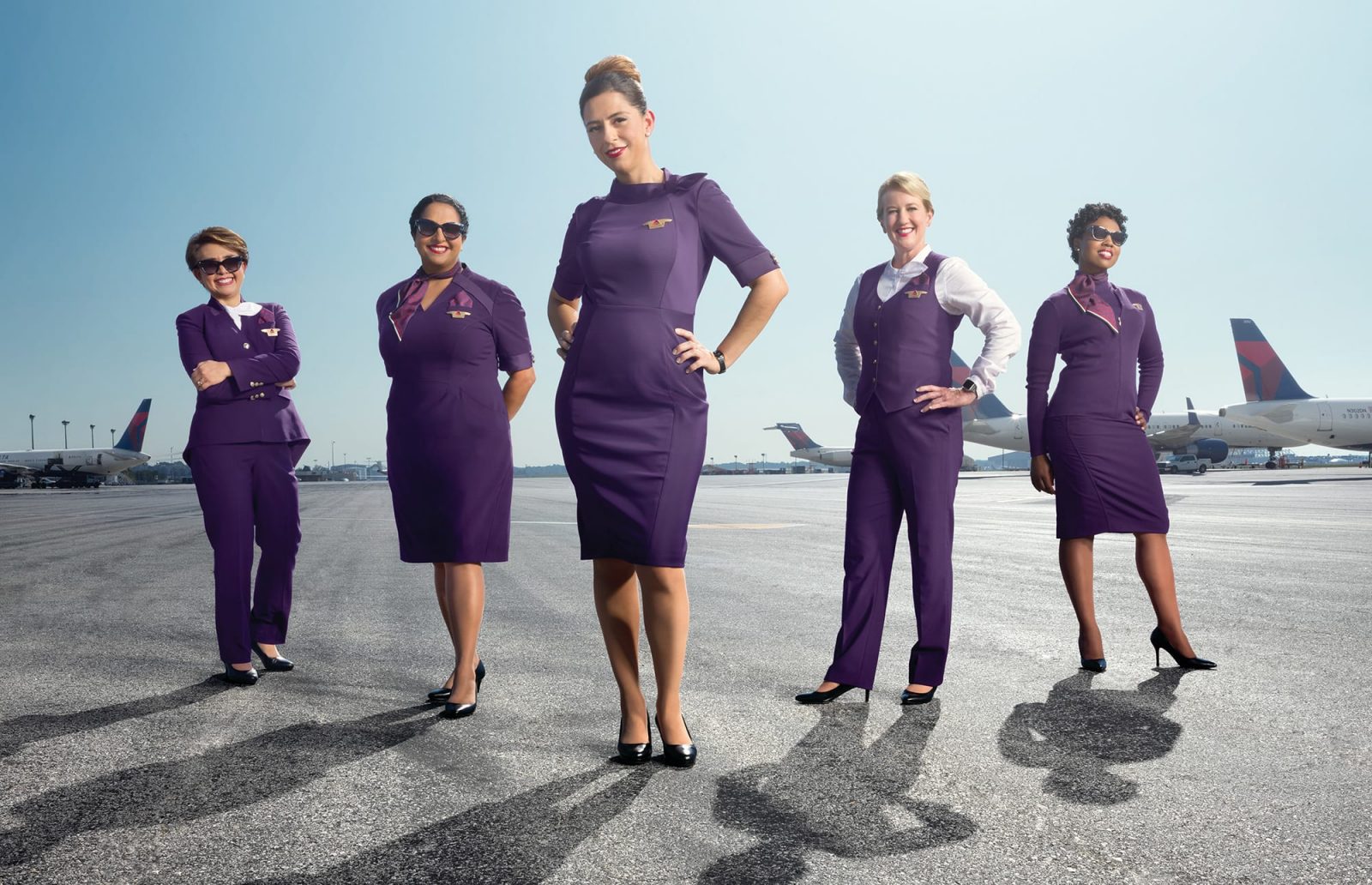
The new color schemed and freshly designed uniforms for the Delta Airlines flight attendants came from the designer named Zac Posen featuring a purple colored dress which was named as Passport Plum. This dress is comprised of a bright purple colored sheath dress that has a winged glossy collar along with a 3 piece gray colored suits and the plum tie beside a pocket square.
Japan Airlines: 1960s to Today
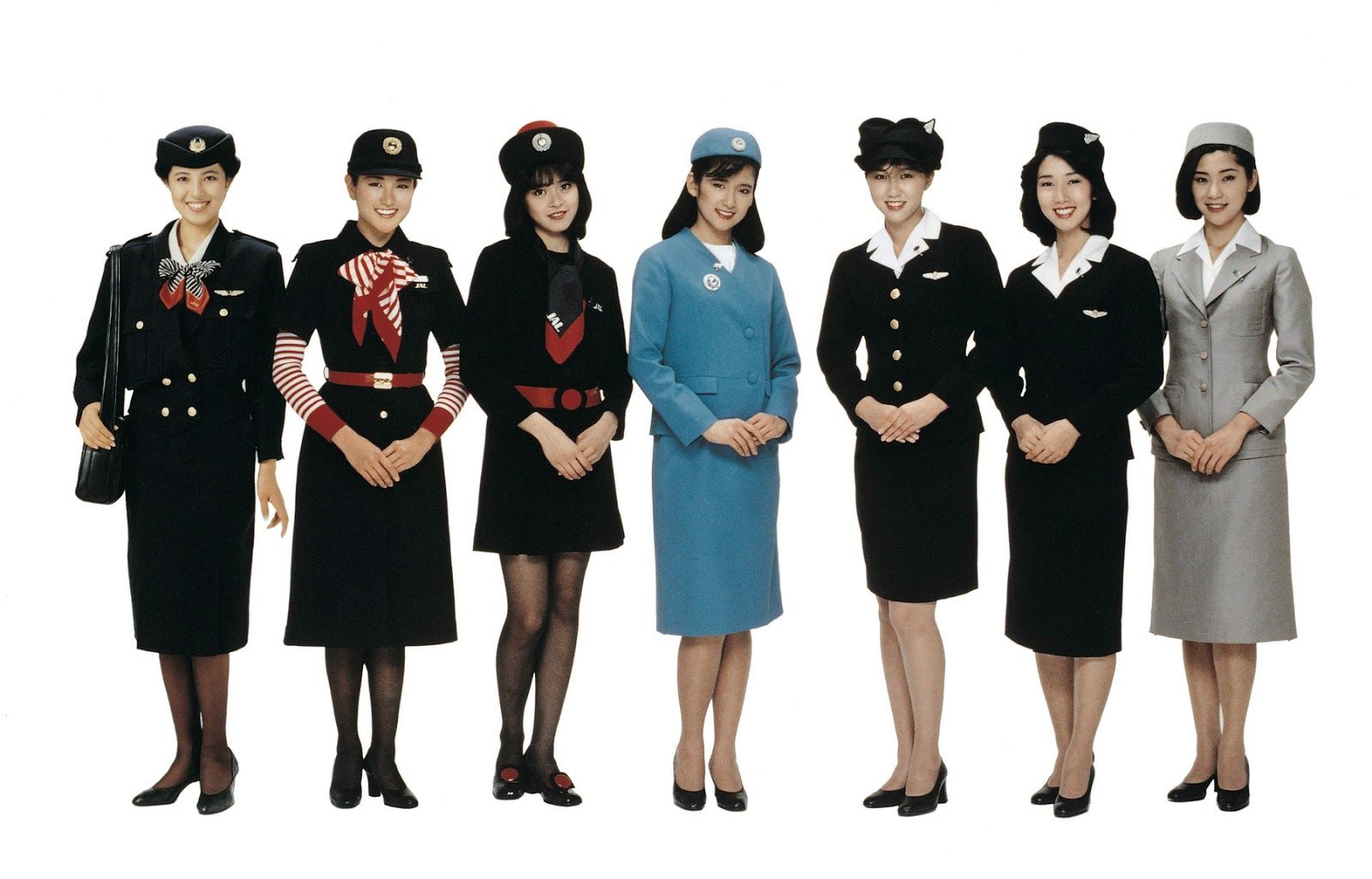
The flight attendants from the 1960s Japan Airlines used to wear the sky blue colored blazers with matching skirts at knee length. The dress had been designed by the designer named Hanae Mori and it also had a pair of white gloves, low plumped black heels along with a sky blue hat.

Change in the 1970s:
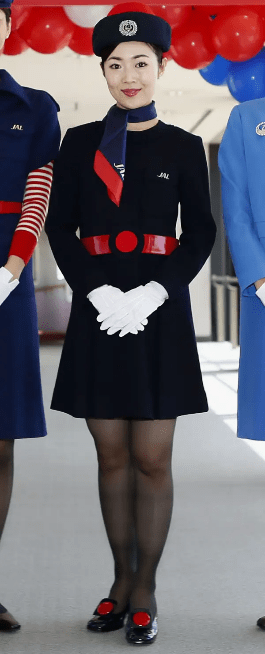
The dress was changed back in the 70s hand was a dark blue colored minidress which had also been designed by Hanae Mori. It also featured dark blue shoes and a red belt which were to represent the huge red discs present in the Japanese flag.
Today:
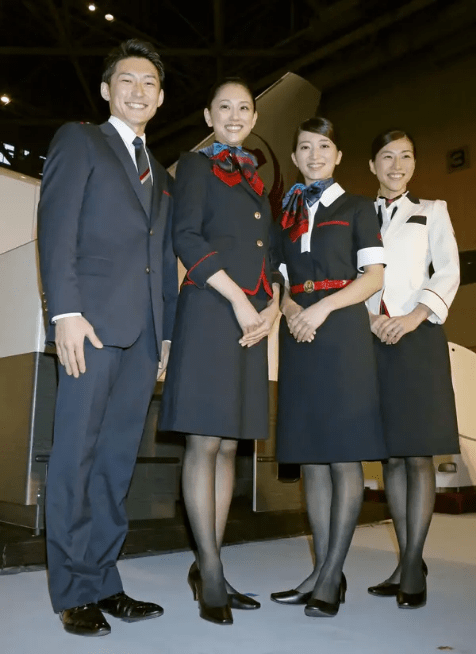
The uniforms were changed in 2013 and were designed by the famed designer in Japan Keita Maruyama that were black suits with tailored jackets and golden buttons. As for female flight attendants, it was the A-line skirt that came with a dress that has short sleeves.
United Airlines: 1930s to Today
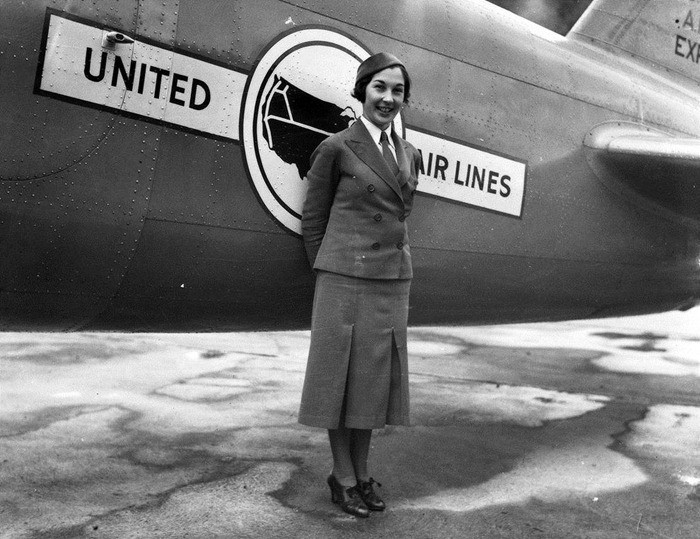
The first-ever uniforms for the flight attendants by the United Airlines were of forest green and the gray colors. The blouse was pale gray that had a double-breasted blazer along with a skirt at calf length. They had to be worn with matching colored cape.
Change in the 1970s:
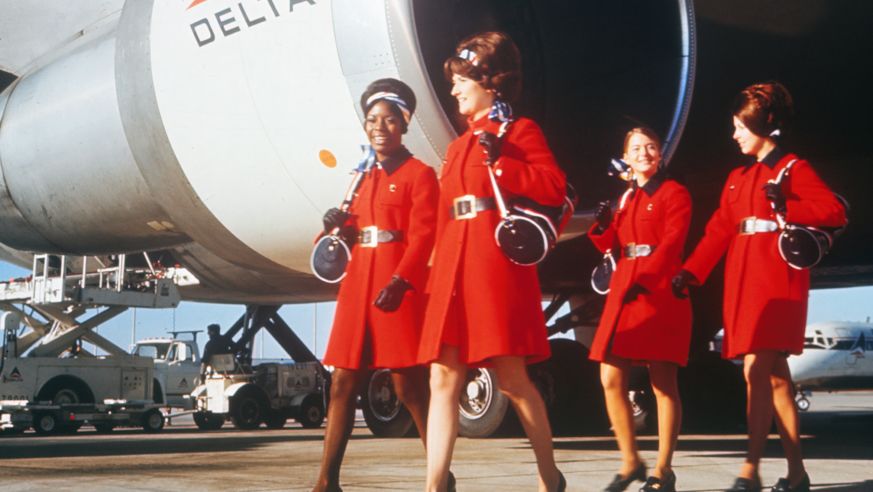
The dresses were changed when they were designed by the designer named Jean Louis back in the 1970s. The dress was made with wool that had a shift dress featuring short sleeves and the white-colored stripe around its neckline and in the front. The dress needed to be worn with the hart that was of military-style.
Today:
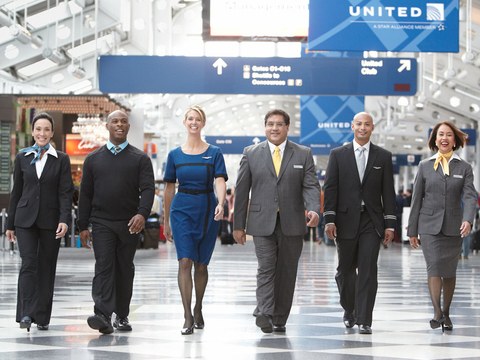
The dresses of the airlines today are business casual featuring black trousers, sweaters, skirts, blazers and vets that have 2 silver stripes on their sleeves.
The female flight attendants’ dresses have options like a black colored sheath dress or a royal blue colored sheath dress both of which have the detailing in black stripes.
New Plans:
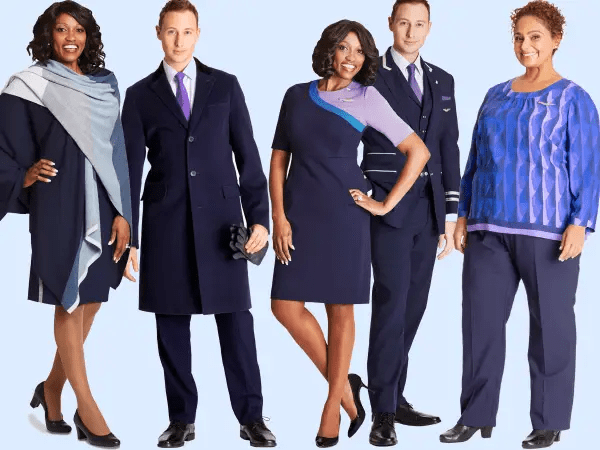
The airlines have plans to feature their new uniforms for flight attendants when they will be designed by the famed designer Tracy Reese working with Brooks Brothers and Carhartt. The uniforms are expected to be rolled out in 2020. They are to be comprised of new colors like Premium Purple, Atlantic Amethyst, and Pacific Blue.
Related Content
Flight Attendants reveal some travel essentials one should always fly with


